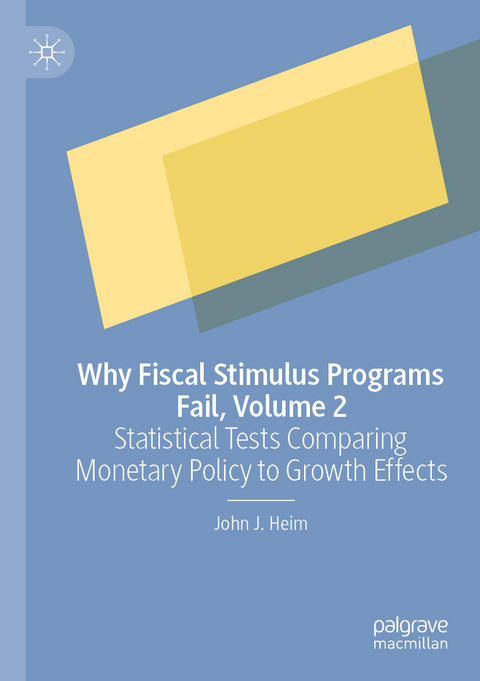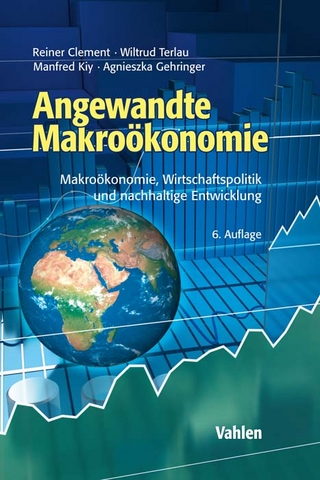
Why Fiscal Stimulus Programs Fail, Volume 2
Springer International Publishing (Verlag)
978-3-030-64729-2 (ISBN)
lt;b>John J. Heim is Visiting Professor at University of Albany-SUNY, and retired Clinical Professor of Economics at Rensselaer Polytechnic Institute, both in New York, USA. He has served in cabinet and subcabinet positions in NY State and Local Government. He is also an inventor of renewable energy devices and holds patents in this area.
Chapter. 1 Introduction.- Chapter 2. Literature Review.- Chapter 3. Methodology.- Chapter 4. Theory of Crowd Out and Accommodative Monetary Policy.- Chapter 5. The Role of Primary Dealers, Investment Banks and Foreign Banks in Federal Reserve Efforts.- Chapter 6. Does Crowd Out Really Occur? Initial Empirical Evidence - One Time Period.- Chapter 7. Does Crowd Out Really Occur? Empirical Evidence - Replication in Many Time Periods.- Chapter 8. Initial Tests of Whether Crowd out Effects Can be Offset by Increases in Loanable Funds.- Chapter 9. Which Models Best Explain How Changes in Loanable Funds Offset Crowd Out?.- Chapter 10. Do Loanable Funds Modify the Crowd Out Effects of the One-Variable Deficit (T-G).- Chapter 11. Do Loanable Funds Modify the Crowd Out Effects of the Two-Variable Deficit (T), (G)?.- Chapter 12. Does M1 or Total Loanable Funds Better Define the Extent to Which Crowd Out Can be Modified?.- Chapter 13. Alternate Ways of Modeling How Deficit Variables Modified by Accommodative Monetary Policy Reduce Crowd Out (Bernanke, Mankiw definitions Of Accommodative Monetary Policy).- Chapter 14. Does Modification of the Single Variable Deficit (T-G) by FR Purchases Better Measure Crowd Out, Controlling for Endogenous Loanable Funds Growth?.- Chapter 15. Does Modification of the Two Variable Deficit (T), (G) by FR Purchases Better Measure Crowd Out, Controlling for Endogenous Loanable Funds Growth?.- Chapter 16. Do FR Purchases, Used as Deficit Modifiers, Reduce Crowd Out, Controlling for the Level of Private Saving and Foreign Borrowing.- Chapter 17. Level of Private Saving and Foreign Borrowing for Private Savings?.- Chapter 18. Do FR Purchases Reduce Crowd Out Effects, Controlling for Other Types of Loanable Funds?.- Chapter 19. Effects of Accommodative Monetary Policy on Crowd Out Before and After Quantitative Easing ( Dues "Pushing on a String" Occur?), etc.
| Erscheinungsdatum | 16.03.2022 |
|---|---|
| Zusatzinfo | XXXIV, 611 p. 39 illus., 2 illus. in color. |
| Verlagsort | Cham |
| Sprache | englisch |
| Maße | 148 x 210 mm |
| Gewicht | 838 g |
| Themenwelt | Wirtschaft ► Volkswirtschaftslehre ► Makroökonomie |
| Schlagworte | 2008 financial crisis • Accomodative Monetary Policy • Crowding Out • Econometrics • Effectiveness • Fiscal Stimulus • Keynes • monetary policy • Quantitative Easing • Stimulus Program • US Macroeconomic Policy |
| ISBN-10 | 3-030-64729-3 / 3030647293 |
| ISBN-13 | 978-3-030-64729-2 / 9783030647292 |
| Zustand | Neuware |
| Haben Sie eine Frage zum Produkt? |
aus dem Bereich


